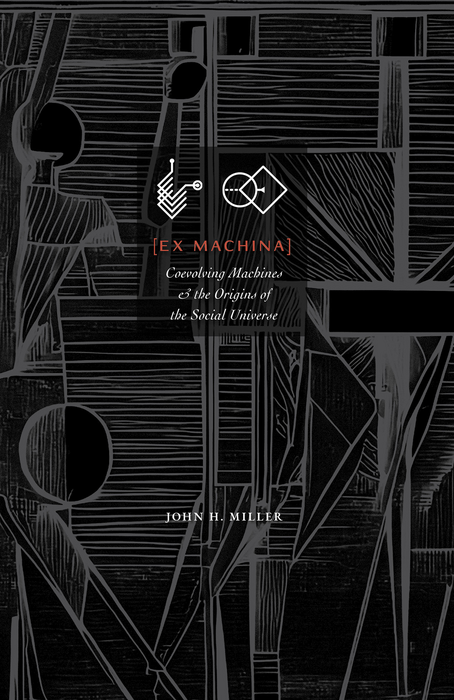Earth is full of examples of social behavior. When individual bacteria, insects, primates, and even self-driving cars make productive choices about their interactions with other individuals, that’s sociality. We can trace social behavior back to the unicellular organisms that became the building blocks for life on our planet. And humans, by becoming social, gained a great advantage in the evolutionary race for survival. If we could rewind Earth’s clock, would social behavior emerge yet again, and could we expect to find it elsewhere in the Universe? “Probably yes,” concludes a new book from SFI Press.

Credit: Santa Fe Institute Press
Earth is full of examples of social behavior. When individual bacteria, insects, primates, and even self-driving cars make productive choices about their interactions with other individuals, that’s sociality. We can trace social behavior back to the unicellular organisms that became the building blocks for life on our planet. And humans, by becoming social, gained a great advantage in the evolutionary race for survival. If we could rewind Earth’s clock, would social behavior emerge yet again, and could we expect to find it elsewhere in the Universe? “Probably yes,” concludes a new book from SFI Press.
In “Ex Machina: Coevolving Machines & the Origins of the Social Universe,” Santa Fe Institute’s External Professor John H. Miller (Carnegie Mellon University) melds ideas from the study of games, the fundamentals of computation, and Darwin’s theory of evolution to look at dynamic social systems through a computational lens. This novel approach, he writes, is like a time machine that allows us to observe and analyze the advent of social behavior — a question that cannot be answered using knowledge from one field alone.
“This work, at its core, embraces SFI’s way of doing science,” says Miller, who is an economist and social scientist. “The most interesting and important scientific questions are often found in between traditional fields.”
But when working across disciplines, even seemingly simple things — like defining social behavior — can be challenging, says Miller. “Different scholars have very different notions about whether it can occur across species, if it requires special forms of intelligence, and so on.” His ultimate definition was fairly general — “a relief to dog owners everywhere,” he says — and it allows the possibility that social behavior could have emerged early in the history of life on Earth.
To answer questions about the emergence of sociality, Miller uses finite automata, which are simple computing machines that can respond to the inputs produced by other automata and evolve inside of a computer. The computations captured by the finite automata illustrate how much interaction and “thought” it takes for a system to become social, providing rich insights into the complex and multifaceted nature of social behavior. Miller began working on the core ideas presented in the book at SFI when he was a postdoc — the Institute’s first — more than thirty years ago. But only recently, aided by dramatic advances in computer power, could he realize the project.
The book became his path to discovery: a way for Miller to explore and understand, with a deeper vision, what it takes to make a system social. It also provided an opportunity to answer questions about the origins of social behavior, which Miller had raised in his 2007 book with Scott Page, “Complex Adaptive Systems.”
This new project offers readers unique and technical insights into the emergence of social behavior in a system. His work reveals that systems can change from asocial to social, or vice versa, as they cross certain thresholds. “If agents are very limited in their ability to process information — to make choices or be ‘thoughtful’ — or in how much they interact with one another, the system falls into asocial outcomes,” says Miller. “Surprisingly, even though these systems are driven by small evolutionary changes, the movement from asocial to social (and back again) can happen very quickly — revolutions by evolution.”
Understanding these thresholds of social behavior might not only explain how social life came to be, but also give us insights into social upheavals such as political movements and revolutions, the rapid acceptance of new social norms, and even the emergence or collapse of an entire social order. Such events can lead to profound and rapid transitions that ultimately define our collective future.
Book Details
Book: Ex Machina: Coevolving Machines and the Origins of the Social Universe
Written by John H. Miller
$9.99 (Paperback); free PDF
Publisher and imprint: The SFI Press Scholars Series
410 pages
Paperback ISBN: 978-1947864429
DOI: 10.37911/9781947864429
Publication Date: December 6, 2022
Available on Amazon.com




